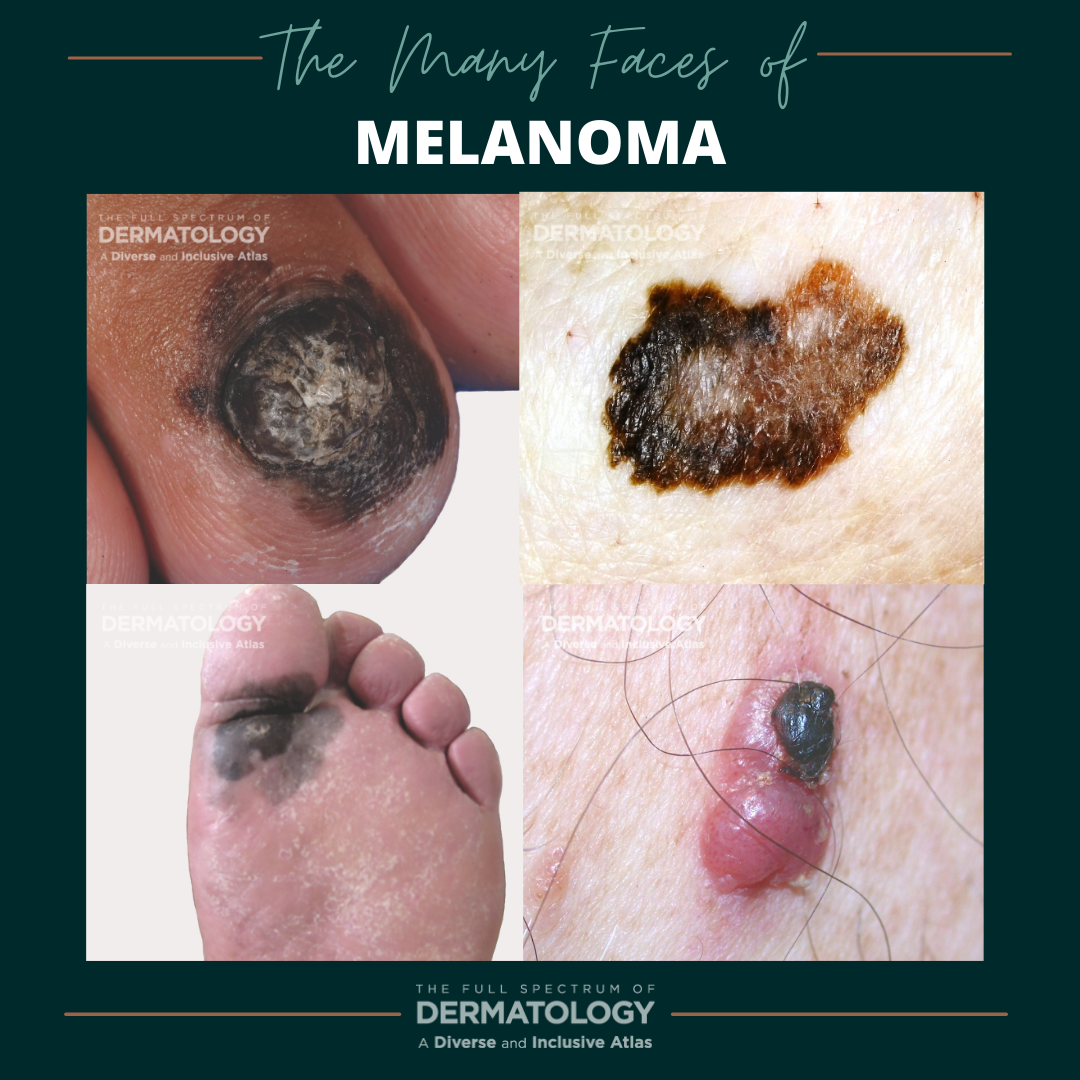Our new series, “The Many Faces of”, will showcase side-by-side images of some of the most commonly seen dermatology conditions in an array of skin tones and briefly highlight nuances in clinical presentation. All images featured in the series are part of The Full Spectrum of Dermatology: A Diverse and Inclusive Atlas, a resource developed by co-editors Misty Eleryan, MD, MS, and Adam Friedman, MD, and published by SanovaWorks and Educational Testing & Assessment Systems.
May is National Skin Cancer and Melanoma Awareness Month. Skin health is important year round but we highlight the importance of becoming educated about skin cancer and melanoma throughout the month of May. Review these important highlights below and make sure to check ALL of your patients thoroughly for skin cancer regardless of skin type.
Though it is important to recognize, identify, and treat all skin cancers, diagnosing melanoma as early as possible is of the utmost importance as it can metastasize to various organs in the body leading to death if not caught early. In addition to identifying melanoma in the office, it is our job to educate patients on the importance of routine self skin examinations using the “ABCDE Rules of Melanoma.” A- Asymmetry. B- Border (Irregular). C – Color (variation or change in color). D- (Diameter – moles > 0.6cm are more concerning for melanoma), E- Evolution (moles that begin to change in appearance or begin to exhibit symptoms such as itching or pain).
Nuances to Highlight
It’s important to note that melanoma can often appear in non sun-exposed areas like the lower extremities, including the soles of the feet, nails, oral mucosa, genital area, and even the eyes. Additionally, during patient examinations, pay close attention to the nails, as longitudinal melanonychia, which is often a natural sign of aging in darker skin tones, should not be overlooked as simply aging. If the linear streak on a nail(s) is greater than 3mm in diameter, changing in size, shape, or color, has varying colors, irregular borders, or involves the proximal nail fold (i.e. Hutchinson sign), one should be concerned for subungual melanoma and perform additional dermoscopic evaluation with possible biopsy of the nail matrix. It is also important to conduct regular skin checks on ALL skin types, including patients of darker skin tones, as melanomas can be often camouflaged as seemingly benign lesions on darker skin tones.
Further Reading
If you would like to learn more about skin cancer in darker skin tones, check out the following article published in the Journal of Drugs in Dermatology:
Mohs Micrographic Surgery in Skin of Color
The United States population is becoming increasingly diverse. Data show increased utilization of Mohs micrographic surgery (MMS) in people of color. Though the incidence of skin cancer in skin of color is low, morbidity and mortality are disproportionately high. Still, published literature on the topic is lacking. In this article, we outline our approach to MMS in skin of color. We review salient topics not published elsewhere in literature in this context, including post-operative postinflammatory hyperpigmentation and suture selection in skin of color. Our goal is to better equip dermatologic surgeons for the rapidly changing demographics of our patient population. We feel this is an important step in addressing the dire health disparities associated with skin cancer in skin of color. Read the full article here.
J Drugs Dermatol. 2022;21(5):536-541. doi:10.36849/JDD.6469
Acknowledgements
We thank co-editors Misty Eleryan, MD, MS, and Adam Friedman, MD for reviewing the content of this article.
Reference
Eleryan, Misty, and Adam Friedman. The Full Spectrum of Dermatology: A Diverse and Inclusive Atlas. SanovaWorks, 2021.
NOW AVAILABLE! Visit the online image gallery for The Full Spectrum of Dermatology: A Diverse and Inclusive Atlas, where you will find high-quality images that you will be able to use, free of charge, for non-commercial educational purposes. Access the online gallery here.
The Full Spectrum of Dermatology: A Diverse and Inclusive Atlas DIGITAL EDITION is available for purchase here.
Did you enjoy this article? You can find more here.



